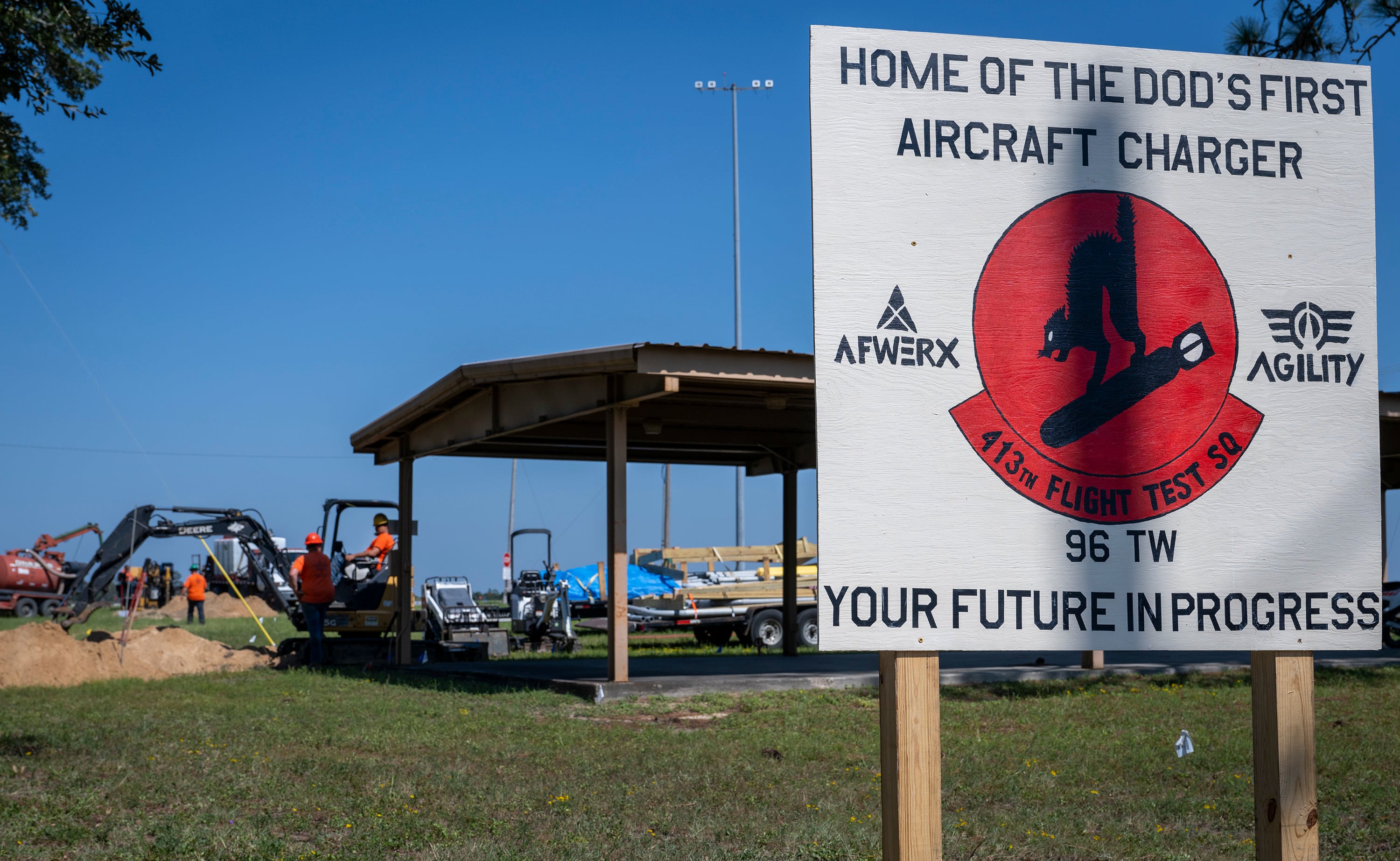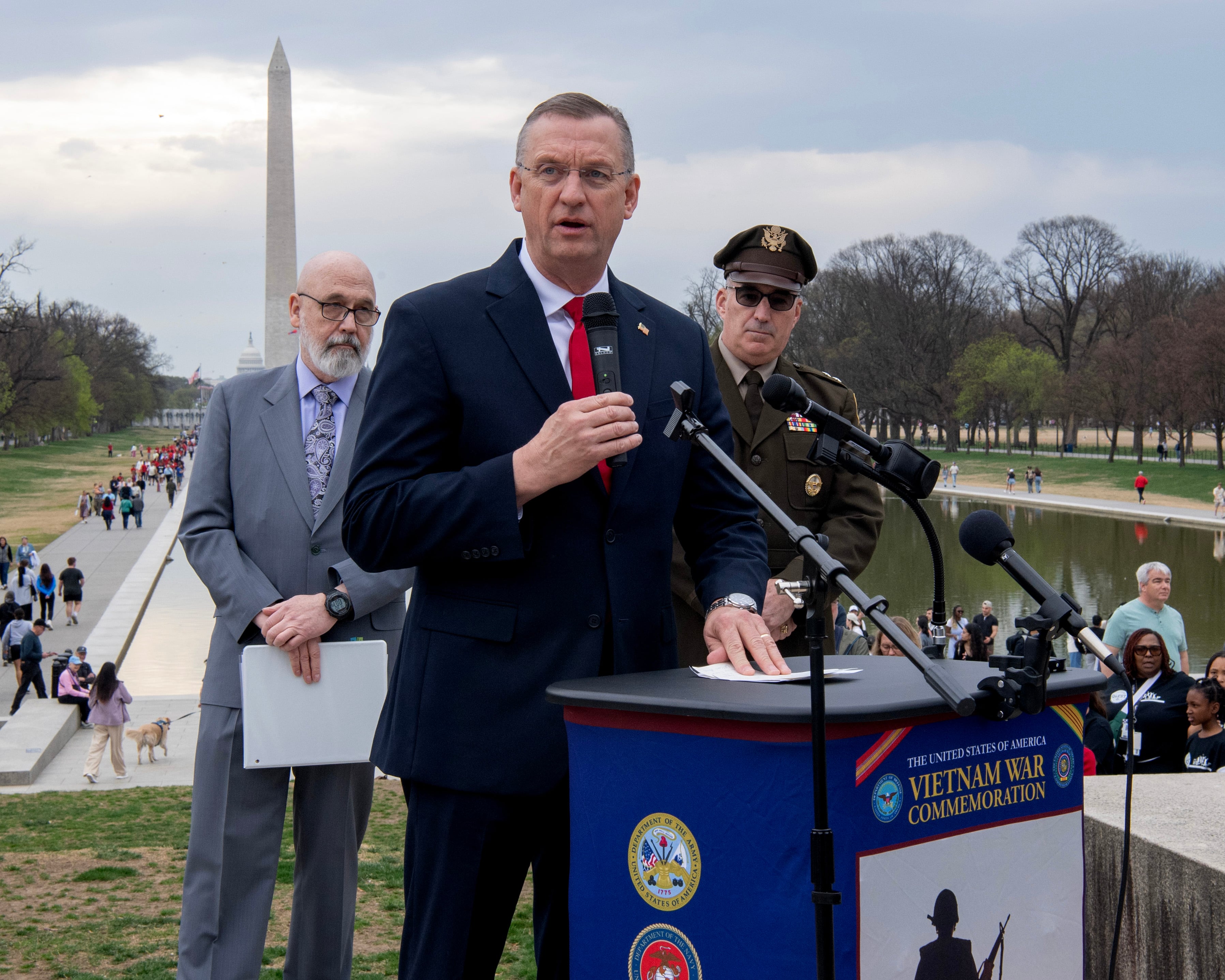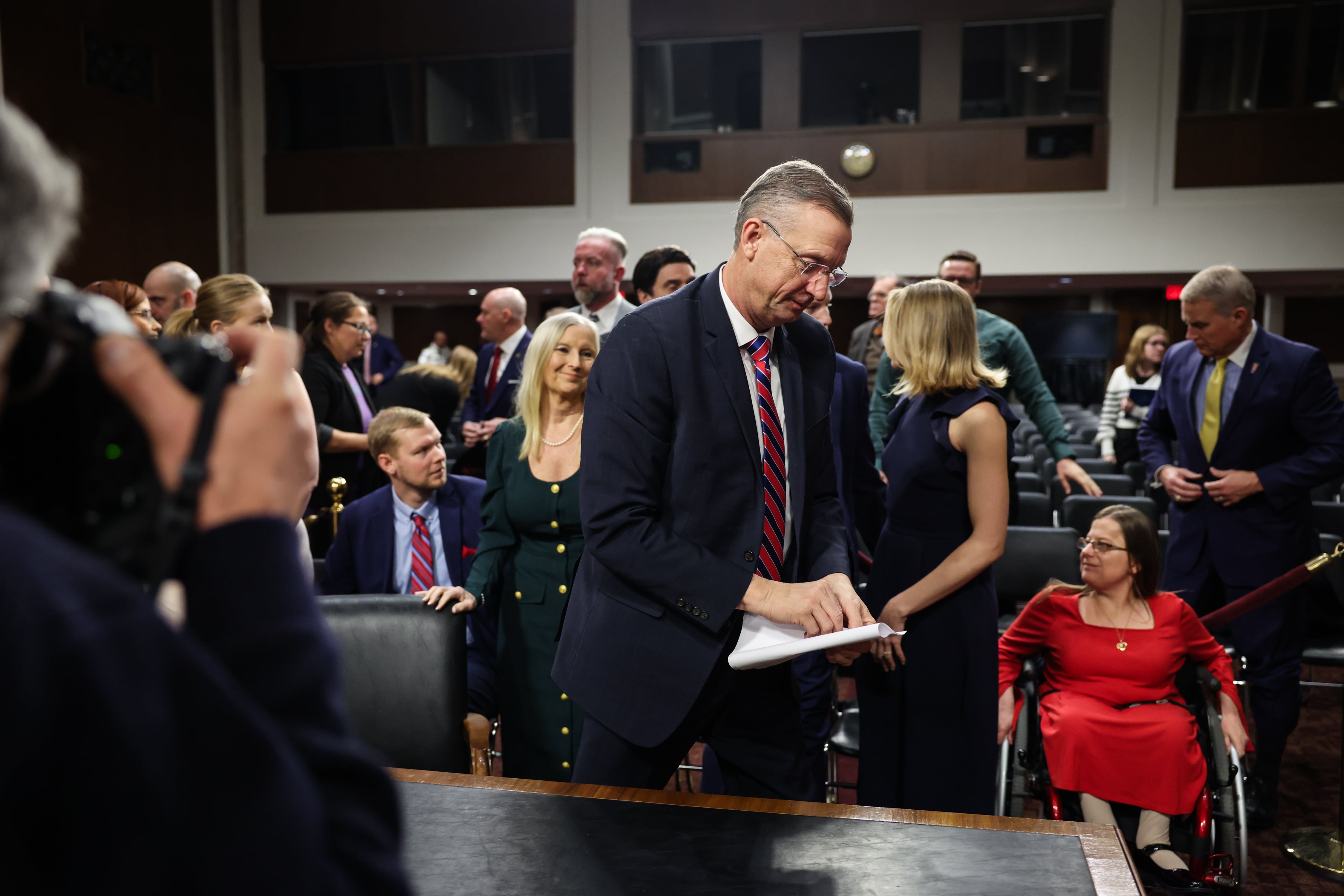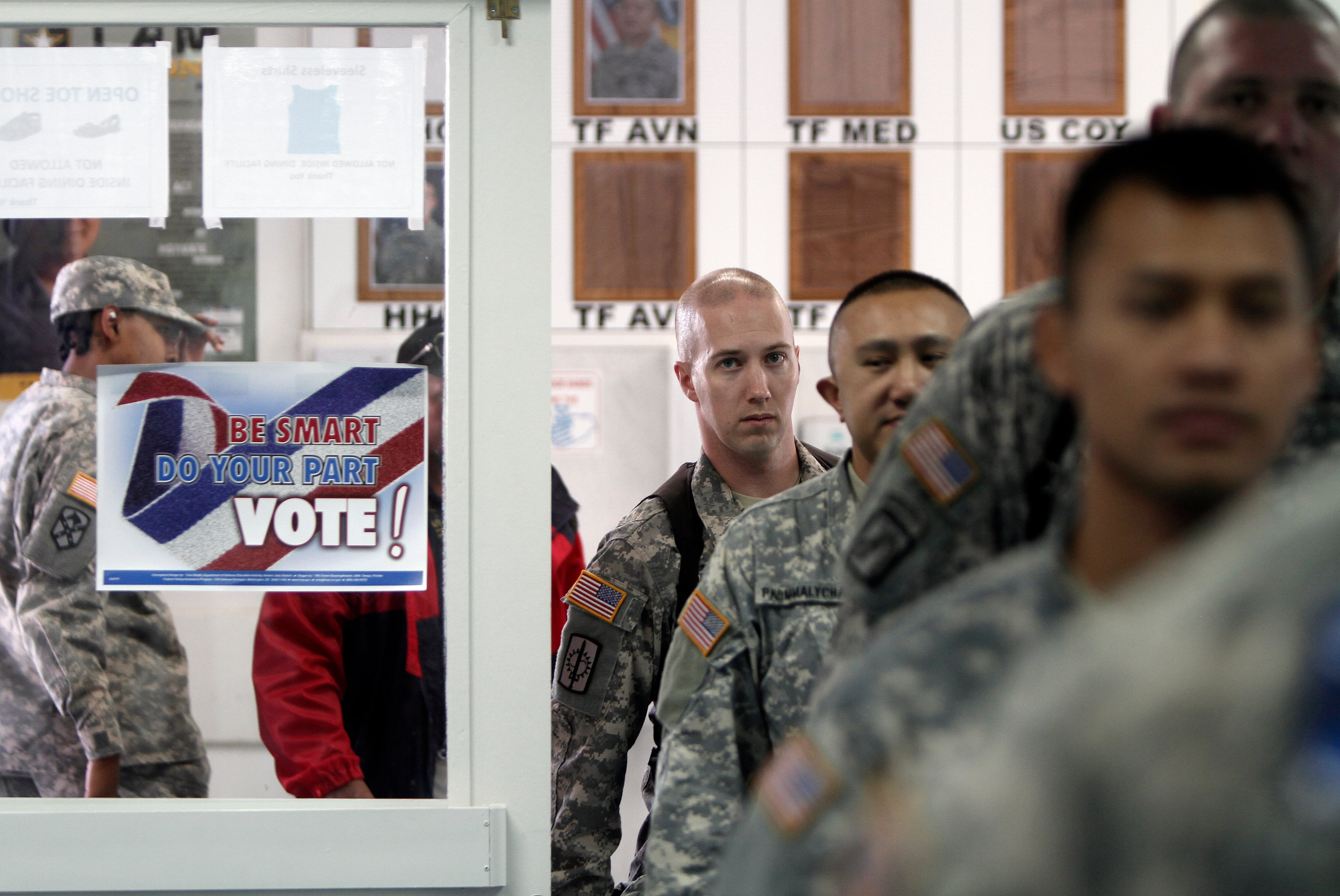WASHINGTON — The Air Force has begun building its first station to recharge electric aircraft, marking its latest step in experimenting with non-fuel burning helicopters.
The service broke ground on the charging station at Duke Field in Florida Sept. 19, the Air Force Research Laboratory said in a statement, and it will be the first electric aircraft charging station on a military installation. AFWERX, the service’s unit that focuses on innovation, and Burlington, Vermont-based electric aerospace firm Beta Technologies are building it.
Beta Technologies is one of more than a dozen companies with contracts through the Air Force’s Agility Prime program, a three-year-old effort that aims to accelerate industry’s work on creating and fielding electric vertical-takeoff-and-landing aircraft.
The Duke Field charging station is scheduled to be finished by Oct. 13. Beta is expected to deliver its ALIA eVTOL aircraft to the base for testing in early fall. Duke is 10 miles north of Eglin Air Force Base, and is home to the 413th Flight Test Squadron, which tests rotary wing aircraft for the service.
The station will have a Level 3 supercharger developed by Beta, and is expected to be able to recharge an eVTOL in under an hour using DC current. Level 3 chargers are the kind typically installed in electric vehicle stations in malls, parking garages and other public areas.
“If you want to make [electric aircraft] viable from a commercial or military perspective, I can’t wait 24 hours to charge my airplane,” Maj. Riley Livermore, the squadron’s flight commander, said in the Air Force’s statement. “They need to do it in less than an hour.”
But a fast charger like this requires a tremendous amount of power — enough to provide electricity for 250 homes, Livermore said. So the base upgraded its electric grid with a 1000 kW transformer to provide the high-power current needed to quickly charge aircraft at the 480-volt, 400-amp station, he said. The new transformer can raise or lower a current’s voltage and intensity as needed while keeping the electricity flow steady.
Maj. Anthony Zartman, the head of the Agility Prime program, said the service’s experimentation with eVTOL craft is progressing into a new phase.
“We’ve grown to the point now with our partners that we’re ready to put hardware at multiple bases and take a close look at possible use cases,” Zartman said.
The Air Force is considering dozens of potential uses for electric aircraft, from rapidly transporting cargo or passengers around a base to search-and-rescue missions in combat. EVTOL aircraft are much quieter than traditional fuel-burning helicopters, and cost less to operate and maintain.
Joby Aviation delivered the Air Force’s first eVTOL to Edwards Air Force Base on Sept. 25. In an interview before the delivery, an Air Force official said the Joby aircraft would first be flown remotely, and later flown by human pilots in its cockpit.
Joby said in a Wednesday release four of its own test pilots have now completed flights in its air taxi at its Marina, California, pilot production facility. These tests included free thrustborne hovers and forward transitions to semi-thrustborne flight, the company said, and will complement Edwards’ own flight tests using the aircraft for day-to-day tasks.
Stephen Losey is the air warfare reporter for Defense News. He previously covered leadership and personnel issues at Air Force Times, and the Pentagon, special operations and air warfare at Military.com. He has traveled to the Middle East to cover U.S. Air Force operations.




